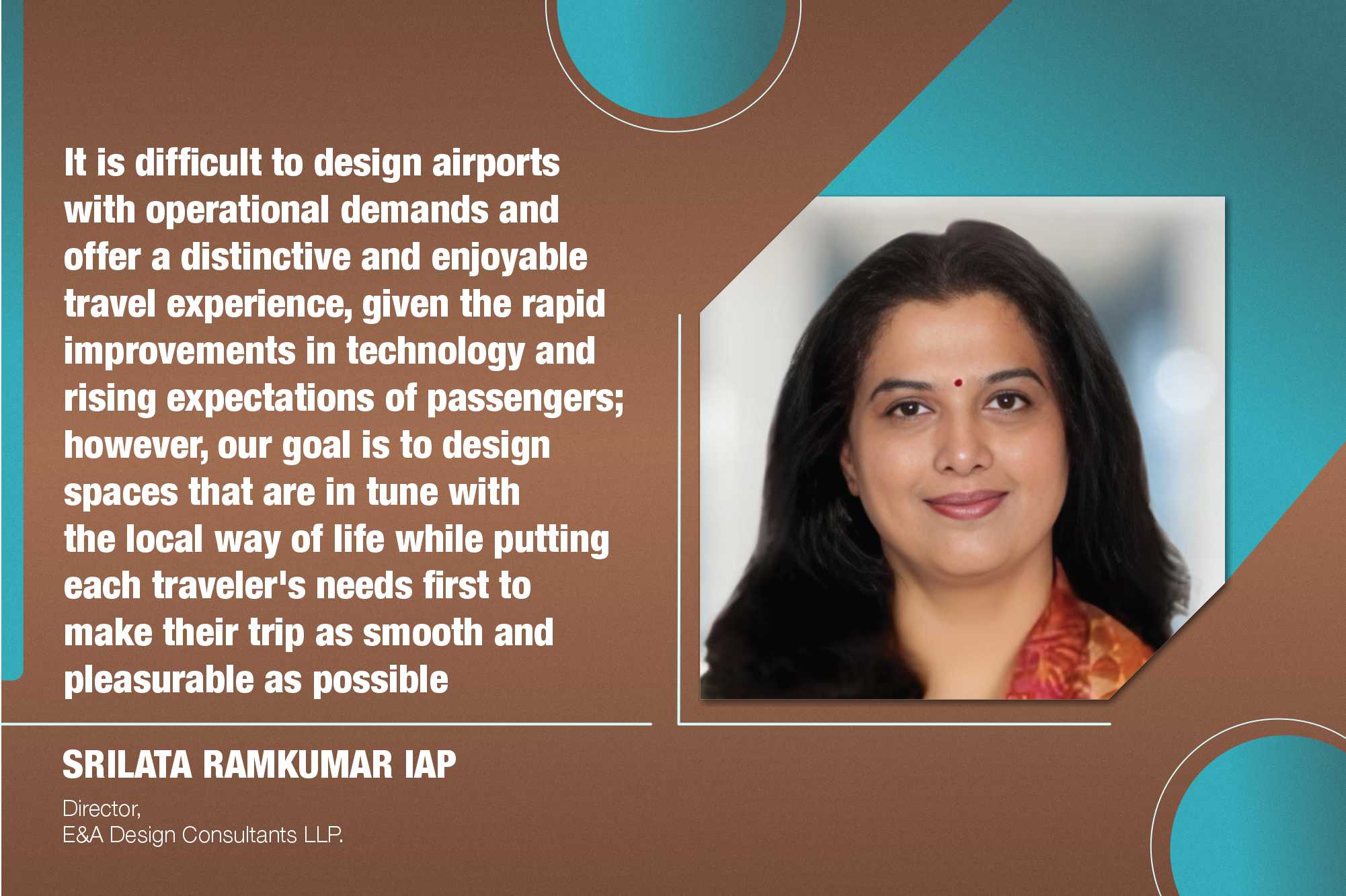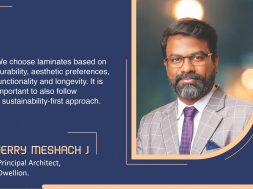Airports should be human-centered design

“It is difficult to design airports with operational demands and offer a distinctive and enjoyable travel experience, given the rapid improvements in technology and rising expectations of passengers; however, our goal is to design spaces that are in tune with the local way of life while putting each traveler’s needs first to make their trip as smooth and pleasurable as possible.” Srilata Ramkumar IAP, Director, E&A Design Consultants LLP.
This exclusive interaction delves into the intricacies of airport design while focusing on sustainability innovation and advancements that are set to revolutionize air travel, making journeys smooth, enjoyable, and unforgettable.
What guiding principles or design philosophies do you prioritise when conceptualising airport projects, and how do these principles shape the overall architecture?
Establishing areas in airport designs that are aesthetically pleasing and useful is crucial. Modern technology must be incorporated, particularly in airport settings. Beyond that, the design should give the airport a particular identity by accurately capturing the special environment and culture in which it is situated.
How do you leverage technological advancements and innovation to enhance airport infrastructure’s functionality and aesthetics?
Architects must be up to date on the newest materials, codes, compliances, and technology. This knowledge makes the development of passenger touchpoints that improve the travel experience possible. Every component of an airport’s design should revolve around the passenger experience, ensuring that every step of the way is designed to make travelling enjoyable.

In your experience, how do you achieve a balance between architectural aesthetics and airports’ practical operational needs?
Prioritising passenger demands and ensuring a flawless travel experience are key components of striking a balance between beauty and practicality. These two elements combine to create a unified, useful, and aesthetically pleasing design rather than exist in isolation.
What sustainable design strategies do you incorporate into airport projects to minimise environmental impact and promote energy efficiency?
The three pillars of sustainable design at airports are social, environmental, and economic. Design solutions must consider these factors to achieve net-zero emissions, green energy, and a non-toxic environment. This method is integral to the design process from the beginning and is not merely a surface-level addition.
Can you discuss how human-centered design principles influence your approach to creating spaces within airports that prioritize passenger comfort, efficiency, and safety?
Human-centered design is essential in airport development. The main objective is to ensure that travelers are at ease, secure, and in good health. This entails considering the requirements of diverse passenger groups, such as women, individuals with reduced mobility (PRM), adults, seniors, and children. To meet these many needs, contemporary airport designs incorporate interactive signage in toilets, sanitary pad dispensers, baby changing stations, and kid-friendly cubicles.
What are some of the most challenging aspects of designing airport infrastructure, and how have you innovatively addressed these challenges in your projects?
One of the largest problems in airport design is dealing with a large number of internal and external stakeholders and sensitively answering their requests. Coordinating multiple disciplines is part of the process of designing an airport every day. Innovative and efficient solutions to these problems can be found by optimising requirements based on historical data and benchmarks.
For more details , Visit : https://www.linkedin.com/company/e-a-design-consultants-llp/
Cookie Consent
We use cookies to personalize your experience. By continuing to visit this website you agree to our Terms & Conditions, Privacy Policy and Cookie Policy.










